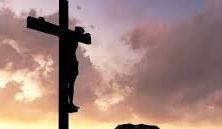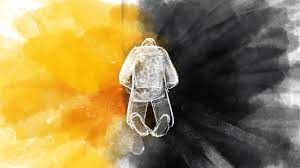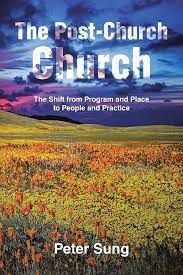Christianity and CRT Review
Josh Cramer • February 27, 2024
A review of Christianity and Critical Race Theory

Christianity and Critical Race Theory: A Faithful and Constructive Conversation
By Robert Chao Romero and Jeff M Liou
Ta-Nehisi Coates has built a reputation as a brilliant writer whose descriptions of the Black experience in America offer plenty of pessimism and little hope. When asked by Colbert in 2019 whether he had hope, Coates said “No, but I’m not the person you should go to for that. You should go to your pastor….” Clear-eyed about the brutality, fear, and oppression Black Americans face, Coates does not see a redemptive arc to the story. Like Coates, Critical Race Theory (CRT) gives us the ability to see things as-they-are without pointing toward a brighter future. CRT is a set of tools designed to analyze, name, and uproot racism within systems; CRT can see realities that Americans have been trying to unsee. But, as Robert Chao Romero and Jeff M. Liou point out in Christianity and Critical Race Theory: A Faithful and Constructive Conversation,
CRT does not have a lot of hope to provide. Where CRT shows us the evils of the past and present, Christianity can point to redemption in the future. Coates was right: providing hope is the role of the church. We need the combination of the two; we need to see reality around us well, and we need hope that there is a better future in Christ.
In some ways, I may be late with this review. CRT took over from “Woke” as the enemy of certain conservatives a couple years ago, but DEI appears to have already become the target of 2024. So, the broadsides have moved on from CRT. Which is really too bad because I am just now ready to talk about it. As late to the game as this review is, it also feels right on time. As we enter 2024, we need training, examples, and opportunities to participate in the work of listening, deep reflection, and charitable engagement. In this political season, with church divisions, amidst pain and animosity, we need a more Christianly way of existing in disagreement.
Enter Christianity and Critical Race Theory, which puts CRT in conversation with Christian practice and theology. Romero and Liou model a helpful and faithful kind of dialogue, just the thing for us in our divided time and place: they try to deeply understand their subjects, interpret with grace and generosity, find places of agreement, explore ways to learn and grow from the conversation while taking note of disagreement and looking for ways that the Christian story fulfills and redeems the brokenness of CRT’s outlook. This looks to me like the way of love and truth-telling, it’s a set of skills that we need to see practiced more often, and it fits within a long and faithful tradition of Christians in dialogue with non-Christian sources, from Justin Martyr, Origen, and Augustine in the early church to James KA Smith (Who’s Afraid of Postmodernism?) and others today. The way forward is attentive and generous listening, not easy categorizing and bomb throwing.
Romero and Liou listen and interact well. They structure the book with an introduction and conclusion around four chapters, each of which examines a key tenet of Critical Race Theory and puts it in conversation with Scripture and Christian theology. Chapter 1, “Creation: Community Cultural Wealth and the Glory and Honor of the Nations” looks at “communal cultural wealth”, the CRT idea that every community has a kind of wealth to bring (as opposed to a default perception that communities of color come with a “cultural deficit”). This fits, say the authors, with the biblical story of nations bringing their treasure into the New Jerusalem, in Revelation 21. All people, as God’s image bearers, have something unique and beautiful to express of God’s character and glory. In chapter 2, “Fall: Sin, Racism, and the Ordinary Business of Society”, Romero and Liou explore the doctrine of sin alongside the CRT idea that racism is ordinary. Sin has infected us all and racism is an insidious kind of sin, common and ordinary, yet destructive. Racist rejections of image bearers who are different fill the history of human relationships. The authors also take note of the fact that modern American doctrines of sin tend to focus on the individual; they redirect us to see that sin—including racism—is also structural and systemic. In chapter 3, “Redemption: Critical Race Theory in Institutions”, Romero and Liou describe the reality of increasing diversity, ask how Christian institutions might best respond to that reality, offer a couple of CRT suggestions (counterstories and voices of color), and critique CRT for its lack of hope. If institutions maintain racism, how can they be redirected as tools for redemptive change? In chapter 4, “Consummation: The Beloved Community”, Romero and Liou focus on eschatology: is there hope? They describe how some Christian perspectives lead us to remain blind to both the good (for instance, the contributions of non-Christians) and the evil (such as the ongoing violence and brutality of racist systems) of those around us. At the same time, they reject the materialism and gloom of CRT. The two perspectives can gain from one another and, at their best, can help provide a pathway and a vision for beloved community.
As helpful as I think the book is, and as much as I respect and appreciate watching the dialogue between Christianity and CRT, I wonder if Christianity and Critical Race Theory
can reach the people who would most be helped by it. Who are the fence-sitters and genuine questioners when it comes to either Christianity or CRT? I found it helpful as a pastor, and I like its tone and posture, but I was already inclined to like the method and content. This is the reality we are in, in Idaho in 2024: our bubbles are pretty well established. I feel a bit like Coates: not a lot of hope for change. It’s here where I need and invite the refreshing of the Spirit: the power that raised Jesus from the dead can surely overcome a few media and perspective bubbles.
Christians are called to see reality with clarity and honesty while also pointing toward the hope of a better future reality. We follow the One who died on the cross in full identification with those experiencing the deepest and darkest realities that evil could call forth. He never avoided or minimized the brutality or violence that humans do to one another or to creation. More than any of us, Jesus is a realist of the highest degree. But his realism does not leave him in despair. The One who cried out “My God, my God, why have you forsaken me?” also cried in triumph “It is finished!” He who suffered the worst violence that humanity can offer also looked forward to a future resurrection, where even suffering can be redeemed and death is defeated. Romero and Liou have given us a helpful guide: they have modeled good reading and helped us to see that CRT is not a boogeyman or a scare tactic but a tool that is best fulfilled in Jesus.
In Christ,
Josh

This is how I remember Lent as a kid: go to mass on Ash Wednesday (I have no memory of any sermon, lol), vow to give up something (that lasted as long as a New Year’s resolution), and eat Long John Silver’s fried fish on Fridays (their hushpuppies and crunchies…mmmm). We didn’t eat meat on Fridays (unless we forgot, but we prayed, so it was ok); it was something everyone in the church did, right? I knew it was leading up to Easter--other than that, I had no real understanding or connection to it. Lent was taught more like an obligation rather than an opportunity. An opportunity to reflect, rejoice, rest, repent (what other “r” words can we think of?) on Christ’s journey to the cross. The next 40 days is an opportunity, an invitation to draw closer to the Giver of Life. For some, this might look sacrificial (giving something up), for others it might be a genesis (starting something new), or it can be a combination of the two. “Your kingdom come, Your will be done, On earth, As it is in heaven” Our Lord doesn’t just teach us to pray, he embodies prayer. He inaugurates God’s kingdom on earth through his presence with us; through his faithful obedience, we get to see and experience heaven on earth. This does not come without temptation, and trials, and wandering astray at times—yet our loving God invites. He invites us to remember, to reengage with the One who creates and holds all things; He invites us to lay down our lives and pick up our crosses. We want to invite you to participate with RCB, as we journey with Christ to Calvary, praying for the strength to be obedient… Your kingdom come, Your will be done, On earth, As it is in heaven.









